Pro Road Racing Can’t Cover Up Its Diversity Problem Anymore
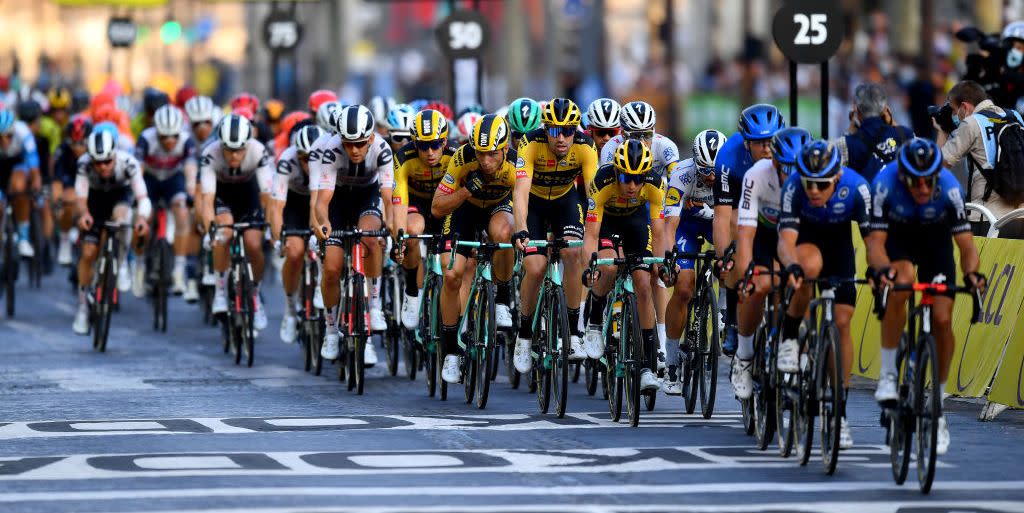
In late September, Trek-Segafredo rookie Quinn Simmons was in Europe, preparing for his pandemic-delayed debut in two of pro cycling’s storied Monuments: the Tour of Flanders and Paris-Roubaix. A talented Classics rider, the 2019 Under-23 World Champion was set to be an integral part of his team’s campaign.
Instead, he found himself back home in Colorado, indefinitely sidelined by his team over what it called his “divisive, incendiary” use of social media, which users found to be racist.
The fracas wasn’t pro cycling’s first or worst episode of allegedly racist behavior at the top end of the sport and likely won’t be the last. Several pro cyclists, including Michael Albasini and Gianni Moscon, have used racist language toward Kévin Reza, one of the few Black riders in the European pro peloton.
At this year’s Tour de France, some racers banded together for a brief show of support for racial equity on the final stage, but the gesture struck some as lacking conviction. Reza spoke then about how even his teammates were largely reluctant to talk with him about racism in society and sports.

It’s not a question of whether racism exists in pro bike racing, just whether it is isolated to a few ugly incidents or more deeply ingrained in structural racism. For decades, it has been at best a blind spot the sport has neglected to address, and at worst perpetuated and encouraged through a lack of real punishment for explicitly racist behavior, and talent development structures that effectively keep the sport almost exclusively white at all levels.
“I started to recognize the disparities around 16 or 17 years old, when I started to travel with the national team,” said Rahsaan Bahati, a multi-time national champion and former pro who now runs the Bahati Foundation, a non-profit dedicated to providing opportunities to get inner-city youth on bikes. Not much has changed since, he added. “In fact, it may be even worse than it was when I entered the sport.”
With the exception of Bahati and vanishingly few other riders of color—like Coryn Rivera, women’s Tour of Flanders winner and former pro national road champion, and track racer Giddeon Massie, a 15-time elite national champion and member of two Olympic teams—elite cycling in the U.S. has historically been almost totally white.
In the U.S. Olympic Committee’s diversity and inclusion scorecards for 2017 (the most recent year available), just two of 56 athletes on USA Cycling’s various national teams were people of color, and zero coaches or support staff. The organization’s board of directors and senior staff is overwhelmingly white, although USA Cycling just announced major changes to diversify its board. That’s even as national governing bodies in traditionally white sports like fencing and bobsled have successfully recruited and developed elite athletes of color at a far higher level, in both men’s and women’s competition.
That whiteness is also reflected in USA Cycling’s broader membership. According to topline results from an internal survey of 7,031 current and former members conducted in August and September and shared with Bicycling, the organization’s membership is almost 86 percent white; just six percent identify as Hispanic or Latino; four percent Asian or Asian-American, three percent Black or African-American, and roughly one percent each as either indigenous or Hawaiian/Pacific Islander. (The U.S. is 60 percent white, according to U.S. Census data.)
Worldwide, pro road racing is similarly homogenous; fewer than 10 percent of men's WorldTour riders are non-white, and roughly half come from a single country, Colombia. Just five out of the 556 riders on WorldTour teams are Black.
Want to become a stronger, healthier rider? Sign up for Bicycling All Access
There are, finally, signs of nascent efforts to change all this. American teams and organizations at the high end of the sport say that they’re committed to racial equity and improving opportunities and access for riders of color. USA Cycling CEO Rob DeMartini said the organization has known for some time that bike racing in the US doesn’t represent significant parts of the country’s population.
“I’m a 59-year-old white guy in a sport that is dominated by people who look like me,” he said flatly. “If we don’t invest [in racial equity] we’re not going to change the outcome.”
But what does that mean in practice? Who’s doing it? And how will we know it’s working?
The Problem Starts at the Top
At the WorldTour level, there are a few programs, like Astana, that groom non-white riders as part of larger national-development goals. Similarly, one WorldTour team, NTT, has an explicit goal of developing African talent, which encompasses riders of white, Black, and Arab identity. And a few countries—like Colombia—that have large numbers of non-white riders have flowed lots of talent to the WorldTour the past decade. But no team has a goal of increasing racial diversity in the sport’s ranks.
As a result, diversity at the WorldTour is wildly inconsistent. Teams like NTT, UAE-Emirates, and EF Pro Cycling have multiple riders of color, but almost half of all WorldTour teams are exclusively white.
Women’s pro cycling is even more monochrome; just three of eight WorldTour teams feature even a single non-white rider, and there are no Black riders (this will finally change in 2021 when Trinidad and Tobago rider Teniel Campbell joins Mitchelton-Scott).
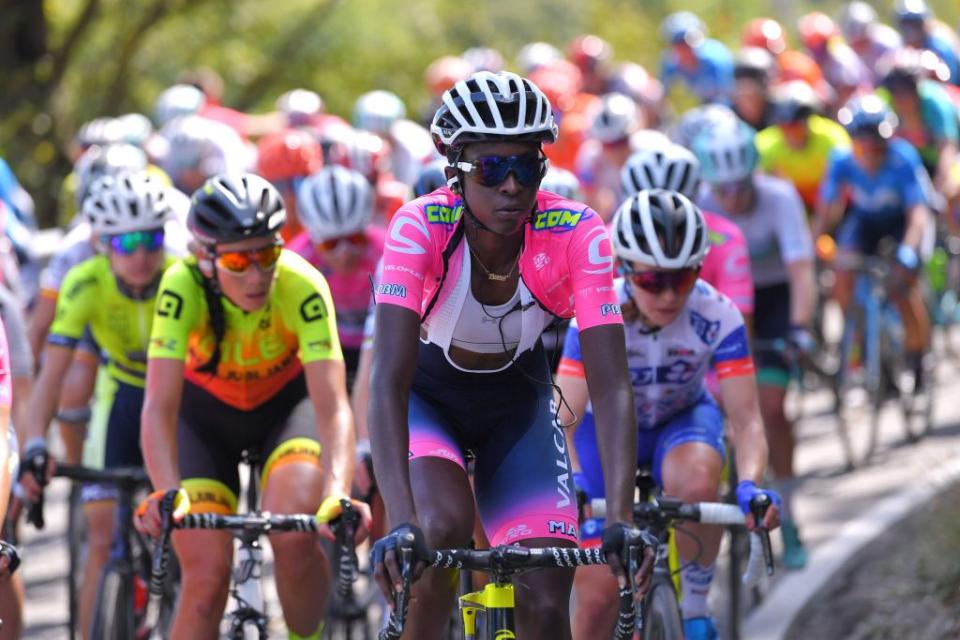
WorldTour teams focus most closely on competitiveness; diversity can grow out of that, but hasn’t historically been its own goal. Thanks partly to star rider Rigoberto Uran, for instance, EF has become a reliable home for Colombian and Ecuadorian pros since he joined in 2016. But that happened organically, according to the team’s General Manager, Jonathan Vaughters.
“There wasn’t a broader strategy of bringing on Colombians,” he said. “A lot of these kids wanted to be mentored by Rigo, and they’ve helped us win a lot of races and they’re good guys.”
While there are only a handful of Black riders on the WorldTour, there are a number of promising young Black African racers, such as Natnael Tesfatsion and Henok Mulubrhan of NTT’s development team (Tesfatsion will ride in 2021 for Androni Gioccatoli, in the ProTeam division), and two intriguing pros on Nippo Delko-One Provence, in the sport’s second-tier ProTeam division: Biniam Ghirmay Hailu and Mulu Kinfe Hailemichael. None are older than 21.
Like it or not, the heart of pro road racing is in Europe, the sport’s traditional home. When evaluating prospects, Vaughters considers both raw physical talent and proof—or at least the suggestion—that a rider can thrive in the unique competitive environment of European racing.
“You have to show you can learn the skill to be in a 200-rider pack going through 14 roundabouts on a road originally designed for horses,” he said.
To Bahati, however, who raced a season for Vaughters in 2005 on a development team, there’s a racially divided double standard. “You take a chance on riders who aren’t 100 percent proven yet,” he pointed out.
This is true; EF has given some opportunities to riders from unconventional backgrounds, such as Michael “Rusty” Woods, a former elite distance runner who was 29 when he signed with the team and had a small, and decidedly mixed, resumé in European races. Woods worked out spectacularly. And NTT’s Continental team is based in Italy, which means its riders get extensive experience in European racing. So, said Bahati, “Why not take a chance on [African] riders?”
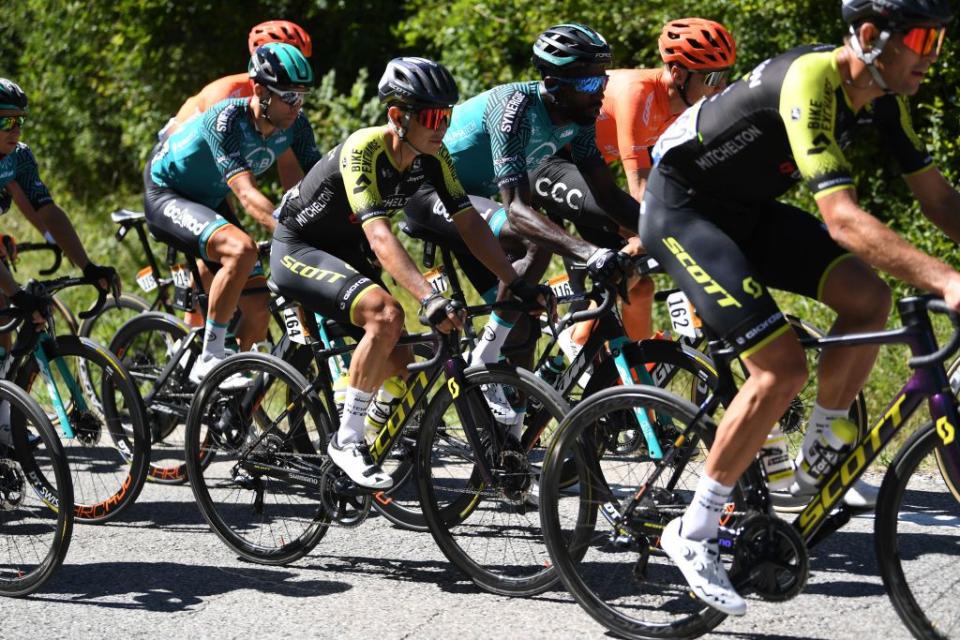
The other component for non-European racers is psychological: can a rider from North America, South America, or Africa move to Europe, be immersed in different cultures and languages, and still perform at a high level? Something as simple as a rider figuring out how to set up a bank account or grocery shop in a foreign country might take help from the team, said Carol Austin, MD, who from 2008 to 2018 was Head of Performance Support and Medical for NTT (formerly Dimension Data). She also established NTT’s Continental development team in 2016.
“It wasn’t about getting a chef to cook for them; it was about empowering them,” she said. But that process might take two to three years to fully play out, she cautioned. In the meantime, the team has to help “so that they can actually focus on the other part of their work, which is actually just riding their bikes.”
Austin is encouraged by how Continental-level teams (the sport’s third tier) have diversified over the past 15 years, based on teams’ country of registry, but she agrees that the WorldTour and ProTeam divisions have much work to do. And she voices caution about pinning big hopes on Africa. While countries like Eritrea have a strong cycling culture, Austin said, it’s the exception, not the norm. African riders face incredible barriers to progress in the sport, from systemic—a 2015 study in the Journal of Transport and Health found that in most of the continent, fewer than 20 percent of households had a bicycle—to the maddening (getting visa approvals is a constant challenge, said Austin).
“Africa is not going to lead,” she said. Of the major cycling countries, she said, it’s on European countries and those like the U.S. to set the pace. “Those are the countries that are going to diversify [the sport] from a racial perspective.”
While talented elite riders of color do exist in the U.S.—EF's Neilson Powless, who is part Oneida, this year became the first tribally recognized Native North American to participate in the Tour de France—it’s also clear that there can and should be far more of them. For that to happen, the talent pipeline has to grow to accommodate and welcome them. That task is likely too large for any single team.

So EF, and the team’s bike sponsor Cannondale, announced in mid-November that in partnership with USA Cycling, they will offer a three-year sponsorship starting in 2021 to help launch two new collegiate cycling programs, one each at a historically Black college or university and a historically tribal university. Cannondale will provide bikes, and other EF sponsors will pitch in equipment as well. USA Cycling will cover race entry fees. EF will contribute both cash and less-tangible resources, like coaching and mentoring for team leaders and riders. The two teams will be announced at a later date, but when they start, they’ll join Saint Augustine University as the only HBCUs or TCUs with a cycling team.
“Racial diversity at the top of the sport is going to come in a lasting way when it’s built on a base of grassroots and community cycling,” said EF team president Mary Wittenberg. “If we can start with 12 co-ed members of each college and then five, 10 [colleges], we can have more impact on increasing diversity in a potentially lasting way,”
The other American-registered WorldTour team, Trek-Segafredo, isn’t as visibly active. Trek-Segafredo team officials didn’t respond for comment about any racial equity initiatives at the team, including whether they were looking to sign any riders of color for 2021. They eventually did, announcing in mid-November that Amanuel Ghebreigzabhier (formerly of NTT) would join the team on a two-year contract.
Trek—the company, not the team—was criticized earlier this summer for not suspending or changing its police bike program after pictures and videos emerged of police departments using their Trek bikes aggressively in crowd-control situations at Black Lives Matter protests, including wielding them as offensive weapons.
Around the same time, Trek announced several moves to improve racial equity at the company and in cycling overall. The company, which is privately owned and has several thousand employees worldwide, started its own DEI process and has pledged to create 1,000 jobs in the bike industry for people of color and establish a $1 million community investment fund to help open bike shops in underserved communities.
Trek corporate spokesman Eric Bjorling also pointed to a new 10-year scholarship program with the National Interscholastic Cycling Association (NICA)—the high school mountain bike racing league—to fund opportunities for 250 riders of color (essentially about 25 teams, split between specific schools and multi-school composite teams).
“There are schools and athletes who would love to participate but they don’t have the funding,” Bjorling said. “There’s a barrier there, and we’re going to just take care of that.”
As for Simmons, general manager Luca Guercilena said in a team-issued statement on October 1 that the team was committed to helping Simmons and that he had a bright future “if he can use this opportunity to grow as a person.” In a section attributed to Simmons, the rider said that he had meant no offense and “I strongly stand against racism,” but didn’t shed light on what he had meant by his posts. The team didn’t respond to questions about what it was doing to counsel and guide its young rider, and declined to make Simmons available for an interview. Simmons’s suspension quietly ended in mid-November, and whatever action by him or the team that led to that result is unclear, despite a pledge to keep the public informed.

Bahati told me that friends of Simmons’s have reached out to him, offering to put the two in touch. Bahati is open to it, although nothing firm has emerged yet. He sees it as an opportunity to broaden Simmons’s perspective, which he suggested may stem more from a sheltered upbringing than overt racism.
“He can make a statement like he did because it doesn’t affect him the way it affects me and others,” Bahati said. “It hasn’t hit home; he had no idea this could be potentially offensive.”
At the same time, Bahati said, ignorance isn’t a satisfactory excuse, even for a young adult like Simmons (who is 19). “The world is at your fingertips; you can go online and there’s so much you can read to bring you up to speed.”
The Problem Goes All the Way to the Bottom
Pro cycling doesn’t exist in a vacuum, of course. To address diversity and inclusion at the sport’s top level, cycling has to create a pipeline for talent that has been missed or discarded in the past (which is what Trek and EF/Cannondale hope to address with their development initiatives). That, in turn, starts with national federations like USA Cycling, which governs most competitive cycling in the U.S. and counts the grassroots development of the sport as a central mission.
In January, USA Cycling announced it would form a Diversity, Equity, and Inclusion task force, to increase diversity on both the staff and in the broader racing community. Named in July, the group includes five internal staff and 10 external advisors, including Bahati. The members, who meet online twice a month, come from a variety of backgrounds.
“I started to hear and recognize that there were voices in our community that didn’t feel included or represented,” said Kelsey Erickson, USA Cycling’s Executive Director of Athlete Health and Wellness, who leads the group.
Step one was a series of membership round tables and the 7,031-member survey, which helped USA Cycling sketch out the demographic contours of its membership, learn whose voices were heard and whose weren’t, and where the barriers were to access and opportunity (USA Cycling plans to post results online in the coming weeks).
“We’ve spent a lot of time talking about what are the goals,” said Ashland Johnson, a member of the task force. Two years ago, Johnson, who is also a lawyer and former Division I basketball player, founded Inclusion Playbook, a DEI consultancy that focuses on sports. “We don’t want to promise things that with the infrastructure [they have] can’t be delivered,” she said. “You can’t mess this up; you only get one shot at showing that you’re going to be a leader in this space.”
That said, Erickson pointed out that things are moving quickly. USA Cycling voted to adjust the size and membership of its board to increase diversity. This week, USA Cycling announced it would re-align the board and shrink it to 12 members, from 20. Simultaneously, 13 of the current board members stepped down, and four new ones were named, including Lucia Deng, the President of NYC’s Century Road Club Association, the largest racing club in the country; Ed Ewing, a deputy director at Seattle non-profit Bike Works and the founder of the Cascade Bicycle Club’s Major Taylor Project; and Reggie Miller, the NBA Hall of Fame player who has become an enthusiastic mountain biker.
There’s the HBCU and TCU program in conjunction with EF and Cannondale; another move to make all junior memberships free (and a related deal with NICA to offer all its members automatic free licenses); and a planned funding announcement that will draw from industry partners, existing budget, and the organization’s Development Foundation. These are not all expressly aimed at riders of color, but aspects like free memberships do help with cost barriers that disproportionately impact disadvantaged communities.
“This is a long-term commitment to make diversity and inclusion not just a part of what we do, but who we are,” Erickson. “And we want the community to be part of it; we can’t nor should we be the ones doing everything. We don’t have all the answers.”
Does the Sport Really Want to Fix the Problem?
Simmons’s quiet reinstatement, without transparency from the team about what changed to allow it, is an inauspicious sign about how durable is the commitment to change. Similarly, Chloe Dygert, who recently joined Canyon-SRAM, publicly repudiated her past social media activity that included liking racist and transphobic posts by other users, such as one that stated that “the color of your skin doesn’t determine your success in America” (effectively rejecting the idea of white privilege).

Dygert pledged to support diversity, inclusion, and equity, writing on Instagram that she was “committed to keep learning and growing as an athlete and a person.” Canyon-SRAM issued its own statement saying that Dygert “willingly committed herself to the values of our team.”
But that wasn’t the last word. Ayesha McGowan, a Black racer sponsored by Liv, questioned the sincerity of the statements. In a searing blog post on her site, McGowan wrote, “neither of them actually apologized for what they did. Nor did their teams indicate what real actions they were taking to help educate their riders (and themselves).” Instead, wrote McGowan (who is also on USA Cycling’s DEI task force), the riders and teams seem to want to simply move on with professions of change, without ever directly facing what they’re supposedly changing and how. And the team’s clothing sponsor, Rapha, issued its own statement on November 27, also condemning Dygert’s social media actions and saying her apology “was not sufficient.”
It’s that kind of “let’s all just agree to move on” approach from teams and riders that raises suspicion of whether change has really come to the sport’s power structures. The hope—stated or just implied—behind many of these initiatives is that getting more riders of color on bikes will naturally trickle up through talent identification and mentoring structures, both existing and yet-to-be-built. But Justin Williams, the founder of the L39ION cycling team, which focuses on developing riders of color, is not so sure about that part. He noted that, racial issues aside, there’s long been massive attrition in the sport.
“Out of 100 guys who raced junior nationals with me when I was 16, there’s just a handful left [actively racing],” he claimed.
Johnson, the consultant and DEI task force member, pointed out that welcoming new members to a community is only one aspect of inclusion; the other is how you treat people of color who are already in your space. “If they’re not feeling welcome, you’re not going to get them to stay,” she pointed out.
Past that, there doesn’t seem to be much effort by pro teams to bridge the cultural gaps that both Williams and Austin noted, and which have a lot to do with that attrition when riders reach elite level. European racing “doesn’t want to have to accommodate other cultures; they don’t want to have to change anything about what they’re doing,” said Williams. In fact, while L39ION has UCI Continental status for 2021, he’s not sure any of it will change because it's simply not a priority. “The Tour de France didn’t really do anything to protest racial injustice, but riders protested a [Giro d’Italia] stage for being too long," he said.
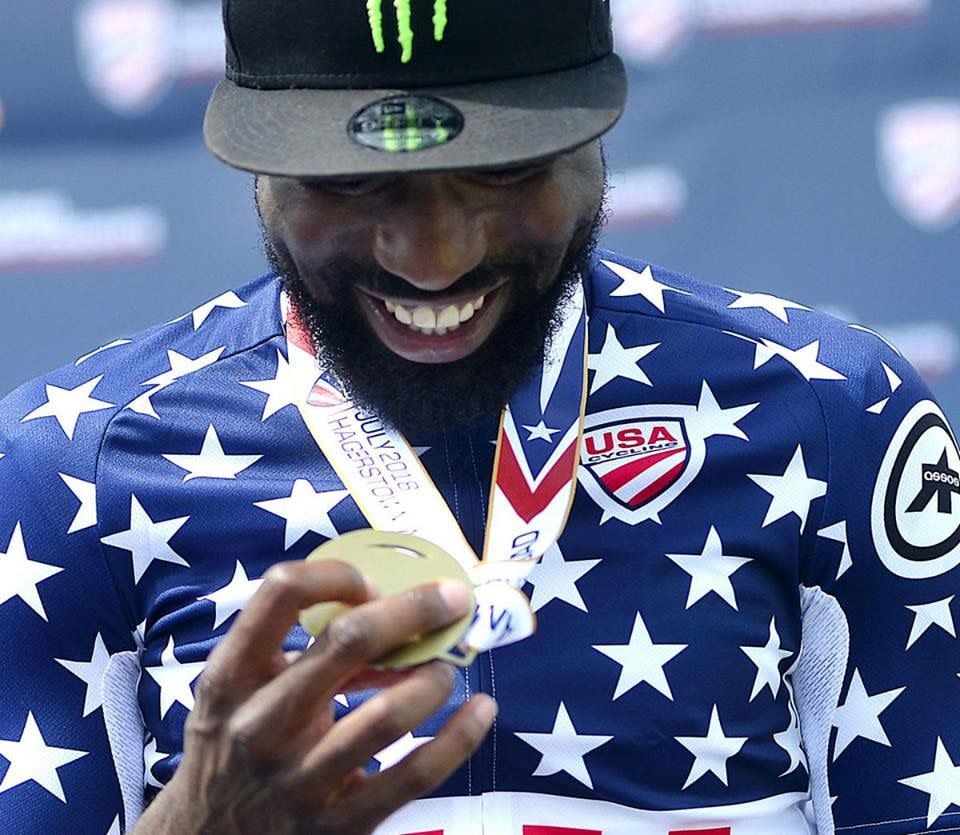
Instead, he’s focused on diversifying the American side of the sport. To him, that means building something new and uniquely American. Williams thinks that criterium racing, with its fan-friendly courses and non-stop action, is the ideal platform, including to reach riders of color who may not care about European racing. Williams pointed to the Red Hook fixed-gear series as a prototype of how to blend bike racing into American culture, partly through savvy social media use and focus on rider personalities. Those are all elements of what Williams envisions for building an American take on bike racing.
For that to work, Williams has to make criterium racing appeal to riders, fans, and sponsors. That’s a hard task. Red Hook went on hiatus prior to 2019 and hasn't returned, and related efforts like the USA Crits series have had limited success. But whether it’s through his distinct vision, changes in European-style pro racing, or some other format yet to be determined, pro cycling could learn a lot from Williams about how to engage with riders of color. Other than from L39ION’s existing sponsors like Rapha and Specialized, and a few calls with USA Cycling, he, like Bahati, says there’s been little outreach.
What Does Success Look Like?
As these initiatives begin, they’re so varied in their approach that it raises the question: how will we know they’re succeeding? Johnson, the Inclusion Playbook founder, says that three to five years is a good initial window to assess whether USA Cycling’s initiatives are sustainable and effective.
“It’s great to focus on people because that’s the visual representation, but until you put this in your policies and the board has an obligation to meet those benchmarks, there’s always a risk that it will be forgotten,” she said. “Your policy should reflect your values, your practice promotes your policies, and then you’ll get the right people in place.”
Three to five years is also a good time frame for teams, but the benchmarks are perhaps different: more riders of color and sustained investment in communities of color. Bahati believes that the only one way to really produce long-term change in pro cycling is if sponsors demand it.
“You’re running a team on millions of dollars a year, and you tell me you can’t even allocate a quarter of that to cultivate that community?” he asked. “A lot of that goes back to the sponsors.”
EF and Trek are in unique positions that way: While most pro teams are essentially small shell companies owned by the team general managers, who control the UCI license and negotiate contracts with a changing roster of title sponsors, EF and Trek are both sponsor and majority team owner. As such, they’re in a position not just to demand change, but direct it and fund it, as EF is starting to do.
The UCI could also step in with stronger support. Reza, for example, told Bicycling earlier this year that racist incidents should be treated like doping, with perpetrators subject to a long ban like they would for cheating.
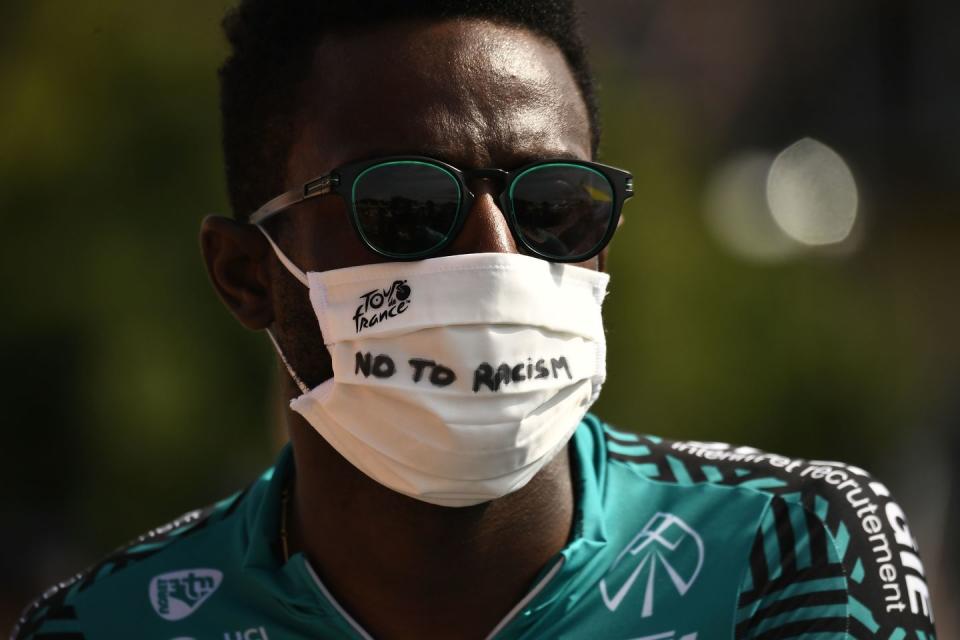
Of the organizations at the top of elite cycling in America, USA Cycling seems to have the most cohesive, structurally outlined plan. DeMartini credits Erickson as the driving force behind the effort (“This is Kelsey and her leadership,” he said).
Even if USA Cycling maintains its long-term focus and funds it, what happens inside the organization may not be nearly as difficult to shape as how its membership receives those changes. DeMartini and Erickson agreed that, right now at least, some part of its overwhelmingly white membership is defensive about, and in some cases actively hostile to, attempts to make the sport more diverse and equitable. Changing that, both in terms of educating existing members and welcoming new ones from other backgrounds, may be the hardest challenge the organization faces.
DeMartini and Erickson pledge accountability. “What does our membership look like now, and is it better 12 months from now?” DeMartini said. “We’re going to make those measuring sticks very public and post them on our website so we are held accountable for what we do, not what we say.”
Another challenge USA Cycling faces is that it's not at the center of racing’s two most-vibrant disciplines: gravel and NICA, which are largely independent. Bahati said that the atmosphere at gravel races is far more welcoming than the road scene. Its relative newness and lack of tradition mean the culture is more flexible and open. In short, it may diversify faster than USA Cycling’s road- and track-heavy sphere of influence.
At NICA, the culture is prefaced on inclusivity, said executive director Steve Matous. “Our communities are very welcoming. Everybody [on a team] competes; nobody sits on the bench.” He acknowledges that the organization has much work to do on racial equity (ridership is around 90 percent white), but points to composite teams of Black riders in leagues in California and Virginia, and a Diné composite team in New Mexico, and urban trailbuilding initiatives in cities like Omaha and Philadelphia, as signs of commitment.
“We need to create partnerships with cities to bring the trails to the kids,” he said.
As the calendar ticks over to 2021, it’s amazing to think that diversity, equity, and inclusion is still just a nascent idea in bike racing, a sport where one of its first major champions, a popular and media sensation, was a Black racer, or that the sport is still battling the same racism, both overt and systemic, that Major Taylor did 122 years ago. Other sports have made better efforts at both the grassroots and elite levels to attract participants of color. But Inclusion Playbook’s Johnson believes there is cause for hope, because we're talking about sport.
“The values of sport are actually very consistent with the values of social justice,” she said. Even if the structure isn’t there and sports organizations aren’t as well funded as business, she said, “I’ve seen organizations move very quickly. Corporations might have had DEI departments longer, but the corporate values don’t coalesce as well (as sports organizations) when it comes to social justice.”
What’s perhaps most important, however, is broader social change that’s driving these shifts. “Think of where we were six or eight months ago,” Johnson pointed out. “We’re here because athletes, especially women of color, refused to stop protesting. It’s going to take time. But imagine writing this story eight months ago. I don’t think it would be the same.”
So whether American riders, teams, and organizations stick with their newfound commitments to racial equity, diversity, and inclusion may rely less on them and more on us. Where they go in eight months, or eight years, will be only as far as we push them.
You Might Also Like

